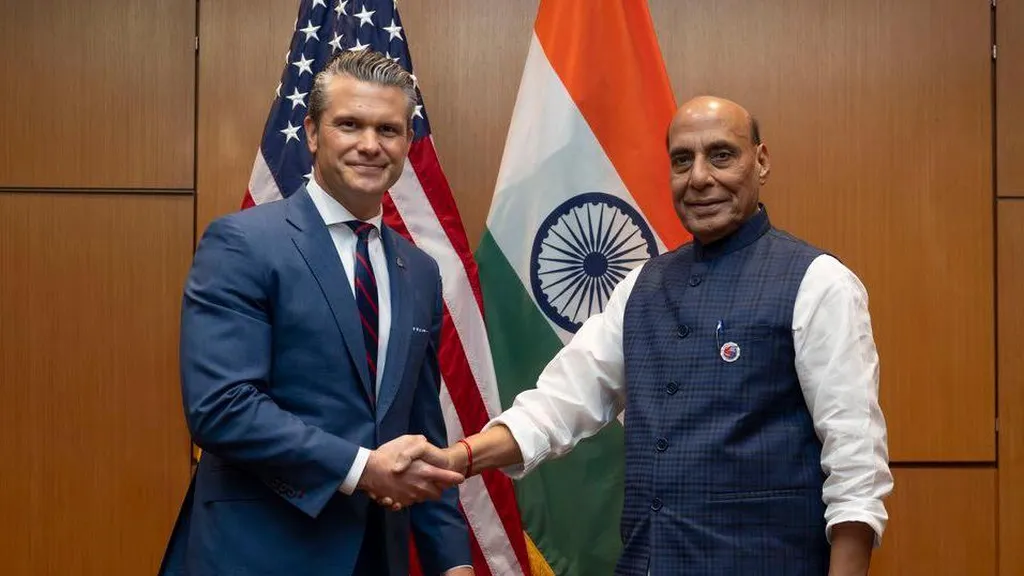The latest renewal of the India-US Defence Framework Agreement, signed with considerable fanfare on the sidelines of the ASEAN Summit in Kuala Lumpur, risks becoming yet another exercise in diplomatic theatrics. Despite the optimistic rhetoric, the agreement merely reiterates commitments first made in 2005 and reaffirmed in 2015—neither of which delivered tangible outcomes. The pattern is clear: successive agreements promise transformative co-development and technology transfer but fail to move beyond arms sales and symbolic gestures.
Initiatives like the Defence Technology and Trade Initiative (DTTI), launched in 2012, and the Initiative on Critical and Emerging Technologies (iCET), introduced a decade later, were designed to elevate the India-US strategic partnership beyond transactional arms deals. Yet both initiatives faltered, leaving behind a trail of unfulfilled promises and bureaucratic inertia.
Senior Indian defence officials acknowledge that the latest framework must be scrutinised not for its lofty intentions, but for its ability to address four persistent challenges: misaligned procurement systems, rigid US export controls, gaps in India’s industrial and regulatory mechanisms, and, crucially, a weak implementation framework. Without confronting these structural issues head-on, the agreement risks repeating the cycle of high-visibility proclamations followed by limited action.
“The experience of initiatives like the DTTI and iCET underscores how entrenched bureaucratic and regulatory barriers have stymied real progress,” said a senior industry official in Bangalore. “Unless these systemic bottlenecks are resolved, we risk another decade of promising paperwork but no progress.”
The DTTI, for instance, was launched with great fanfare in 2012, aiming to foster defence co-operation through four joint projects: Mobile Electric Hybrid Power Systems (MEHPS), Integrated Protection Ensemble Increment-2 clothing, AeroVironment RQ-11 Raven drones, and roll-on/roll-off intelligence, surveillance and reconnaissance (ISR) modules for the Indian Air Force’s C-130J-30 transport aircraft. None of these projects advanced beyond the conceptual stage, and by 2019-20, all had faded away.
Later efforts, such as the proposed joint development of an Advanced Tactical Ground Combat Vehicle (ATGCV) and a family of helicopters under the Future Vertical Lift (FVL) programme, also collapsed due to mismatched priorities and India’s insistence on indigenous development. Similarly, the Joint Working Group on Aircraft Carrier Technology Co-operation (JWGACTC) failed to produce any meaningful progress, despite ambitious plans to co-develop a 65,000-tonne aircraft carrier.
The iCET, introduced in 2022, aimed to build on the DTTI’s shortcomings by focusing on co-development and co-production in critical emerging technologies, including 6G networks, artificial intelligence, and semiconductor know-how. Yet, three years later, it has achieved little of substance. Like its predecessor, the iCET has generated momentum, meetings, and mechanisms but has failed to deliver hardware, co-developed technologies, or co-production programmes.
“The recent history of Indo-US collaboration in critical hi-tech areas is marked by an alphabet soup of acronyms like DTTI and iCET, in which the former undeniably flopped and the latter is well on its way to following suit,” said a veteran Indian Army officer. “US defence manufacturers operate independently and are not obligated to transfer technology merely at their government’s behest. The US has strict export-control laws, subtly managed and controlled by its powerful defence industrial complex, which will not be easily relaxed.”
For the latest Defence Framework Agreement to break this cycle, both nations must confront the structural barriers that have hindered past efforts. Without meaningful reforms in technology-sharing mechanisms, procurement systems, and industrial collaboration, the agreement risks becoming yet another chapter in a decade-long story of unfulfilled potential.

